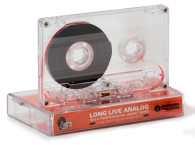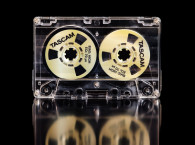But the reality, in 2018, is that vinyl is back in force, people are spending upwards of $150 for copies of reel-to-reel master recordings, and bands and record labels are again putting out music on limited edition cassettes because there's a market for it. In New York, you can find stores selling restored boomboxes and original Sony Walkmans (some of them, still in the original package...).
As audioXpress reported back in October, there's a company again surfing this analog wave, successfully selling new reel-to-reel tapes for audiophiles, studios, and archives, and it has now decided to offer new blank music cassettes and is making available bulk cassette tape for duplicators. Precisely this week, RecordingTheMasters is launching the new FOX C-60 Analog Compact Music Cassette in the retail market.
RecordingTheMasters is a brand of the Mulann Group, a French industrial conglomerate that currently holds all the knowledge and the processes for high-quality magnetic tape that originated in Europe. The story goes that in 2012, French company Pyral acquired Recording Media Group International (RMGI), a Dutch manufacturer of magnetic tape products, which in turn resulted from an earlier joint venture between DuPont and Philips. The RGMI factory in the Netherlands, built by Philips in 1968, was previously under control of a German company that acquired all the equipment, processes, and talent from EMTEC's Munich plant (ex-BASF), and with it, almost 100 years of history in magnetic tape manufacturing. In 2015, Mulann acquired all the assets of Pyral. So, effectively, the Mulann Group now holds all the knowledge and the processes for high-quality magnetic tape.
When we published the story about the RecordingTheMasters and the FOX C-60 cassette on our website, it was one of the trending news items for the month and we received many questions about the tape formulation, and why the company decided to do ferro-oxide instead of chrome, etc. So, when we learned of the opportunity to meet Jean-Luc Renou, CEO of Mulann at the recent Audio Engineering Society convention in New York, we immediately jumped at the opportunity. For the interview, I was lucky to have with me two audioXpress authors who have a vast knowledge about anything analog, recording, tape machines, and archiving: Gary Galo and Scott Dorsey. The interview I am sharing today was the result of a short but very interesting chat with Jean-Luc Renou, with questions (and probably much more discussions, which we couldn't fit here) shared among the four of us.
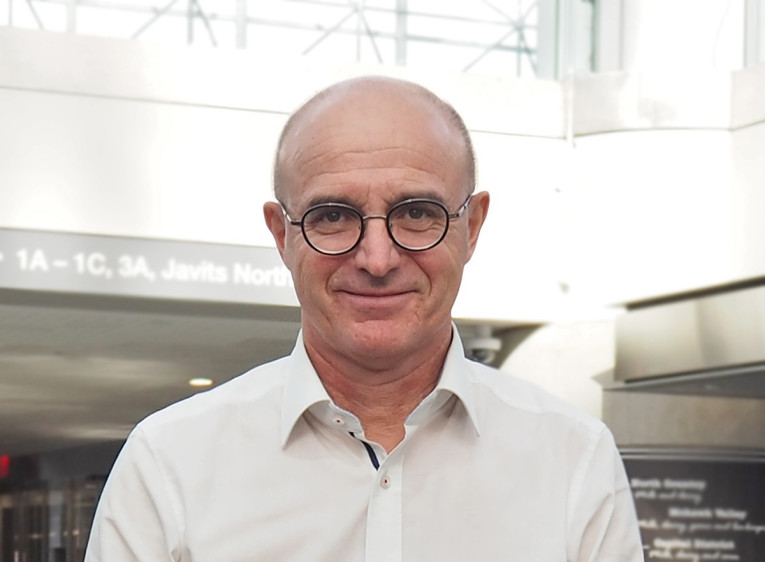
Of course, our first question, knowing that RecordingTheMasters is doing well in the reel-to-reel business was, why did you decided to expand that activity into the cassette?
Jean-Luc Renou: Demand. One and half year ago, we started to have demand. And I also asked... why? Clients told us that their stock was depleting and that they needed fresh cassettes. This happened with one, and another, and another. After six months, we made the decision to look at that. Since we are doing reel-to-reel, we knew that there were technical challenges, but we have a very skilled team in Avranches. They know what it takes...
Mulann acquired Pyral three years ago and when I took over, I was very impressed by the team, the skills, the tools, and the level of the people. Initially, we had some issues with the quality of the product, we had too many rejects at the end of the line, so we invested in the team's time and energy. There was a very positive energy. The team was waiting for it and we now have total control of the manufacturing process and we achieved a lot.
So, the cassette benefits from all this work. And when they told me "we can do it," I trusted them. We needed a year to make it happen. There were challenges at every step. First to have a good tape formulation. It's derived from our reel to reel, so we didn't have to invent something new, we took what we think is good. Also, the coating was a tricky part, to make sure that we had the thickness and still the right level of accuracy.
Launching a tape is not so hard if you are from this industry. Making it consistent over time, with all the quality control is another ballgame. And I wanted to make sure that we had this quality also. The last step is the slitting, which may sound very easy but is a very tricky process. It took us more time than I expected, but today we have production running, and we are meeting the demand.
AX: When you say demand, where is it coming from?
JLR: Mainly from duplication for music! People don't come to us for voice. The formula we have was optimized for music. It's a Ferro Type I, normal bias. Once we prototyped the tape, we sent some to various duplication companies in different places, including Japan. They tested it, offered feedback, we made another run - in fact we made three runs in total to make it right - and now we have the right product.
We met their benchmarks and we were told that we are ready.
We presented the cassette in Munich, at the High End show, in May. We now have started production and we are ready for the first deliveries in the US. Through our reseller network, people will be able to buy the cassette in November.
AX: How many companies are requesting cassette tape for duplication?
JLR: We had more than 15 different places requesting it. Small duplication. Not as big as NAC (National Audio Company) here in US, but in the Netherlands, in Japan, and in those countries, there are many small duplicators.
AX: To those duplicators, you are selling tape pancakes?
JLR: Yes. As pancakes and for some they might require also jumbo rolls, but most of them use pancakes. Some are also looking to do slitting themselves. I was surprised, but we already have one case like that. I'm surprised too, but why not? If they know how to slit, why not? But most of the demand will be for pancakes.
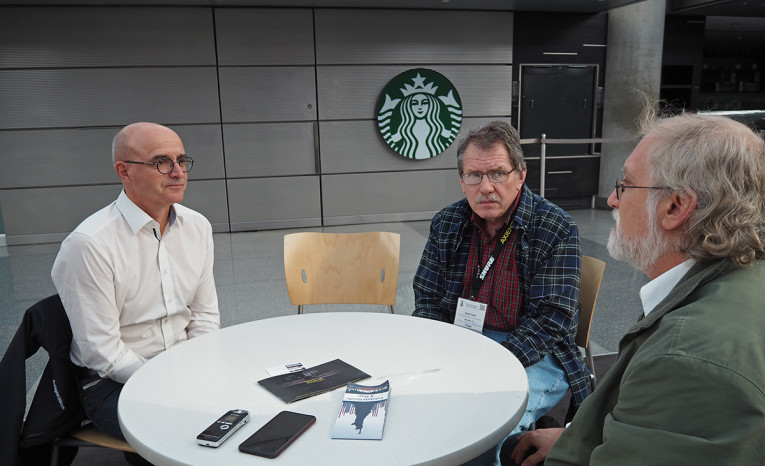
AX: For people who have been using the older BASF duplication tape pancakes for bin loop master work, how different is this going to be than that tape?
JLR: Some clients are telling us that it compares well to the BASF Super Ferro, Extra Ferro or similar. One of the top BASF formulas at the time. And this, coming from professionals who have made the measurements.
AX: These duplicators are currently using old tape...
JLR: Yes. Their stock is old. And is depleting now very fast. So, that's why they need a fresh product to carry on, because they also have more and more demand.
AX: But to make it clear. Your new cassette formulation is derived from the open-reel formulation and not from the old formulas? But the particle size must be much smaller? And those particles should be all stretched out...
JLR: Yes. Yes. It is a very different product. We started from the reel-to-reel formulation to make it suitable for the cassette.
AX: So, what are you doing to make the resolution much higher, in order to use it at such a low speed?
JLR: That's part of our secret. We don't say it is better. We can say we met all the benchmarks from professionals. They are telling us that it is good enough.
AX: To some extend we understand this could be a sort of a religious debate, because some duplicators always used Cobalt Doped tape (Cobalt-absorbed iron oxide), while others hated cobalt tape. Even today we don't know which one was better, but formulas were different enough.
JLR: To make it clear, we no longer use cobalt. We use a ferro oxide formula, which achieves the results that people wanted to have. That means all measurements, from signal to noise, bandwidth, etc., are in the first high-level category of the cassette formulas that we had in the past.

AX: Is there any chance of again manufacturing a chrome tape?
JLR: There are environmental issues... And we are not there yet. We want first to test the market and see how the market responds to the ferro type and if the market is really here, and there is demand. Sure, people are asking us to do 60, 90, Type II, Type IV. Ok. We need to go step by step. Today, we want to launch this product, test the market, and if there is a response, then we have some room - and my team will be happy to work on that - for other products.
AX: Tell us more about the FOX C-60 cassette which will be available for the consumer market.
JLR: We did both at the same time. Because there are people who want to buy blank tapes. We made the announcement for the FOX (meaning Ferro OXide) tape using the animal reference as well, with an orange tail, which is our color as well.
AX: And on what machines do you think people are going to use these blank tapes? Because right now, primarily the cassette decks that are out there are used machines...
JLR: Yes. But there are many of them. Many used machines.
AX: Presumably, people buying it will also be putting them to duplication machines and selling pre-recorded cassettes. Which they will playback on their car machine... (laughs)
JLR: Well, car will be much less than home for sure. There are still many more cassette decks at home. And we are also already in contact with companies that are working on new players. We were approached already by some companies, one of them in Europe. So, this is going to happen. We know that!

AX: For home consumer cassette use, nobody ever set the bias. And people bought the cheapest possible tape decks. The bias was set at the factory with a narrow range according to the Japanese standard, and everybody made their tapes to match the Japanese standard. Which is not a problem for mass duplication where you actually calibrate things properly. But is the new formula close enough to that standard that it will be OK for kids at home?
JLR: That will be part of testing the market. We will see what will be the issues that people face. It will take another year before we know exactly what to do.
AX: So, we have no idea today how people are going to play the cassettes. If they will be making recordings. And what expectations people will have in terms of fidelity and mechanical reliability. Using old tape decks the challenges will big on the tapes. And we are seeing here in New York stores selling restored vintage boomboxes...
JLR: We are confident about it. I agree with you. We can do better today than those boomboxes... We see also companies selling boomboxes in Japan as well. And we also have Crosley, which is an example of a company selling a very simple cassette deck and radio for $60. But it's new and it works.
AX: What is the market for cassette in Japan?
JLR: Crazy! Because of Karaoke. When I was there, I couldn't believe how many people are still using the analog cassette just for their karaoke recordings. And Japan is a country that loves music.
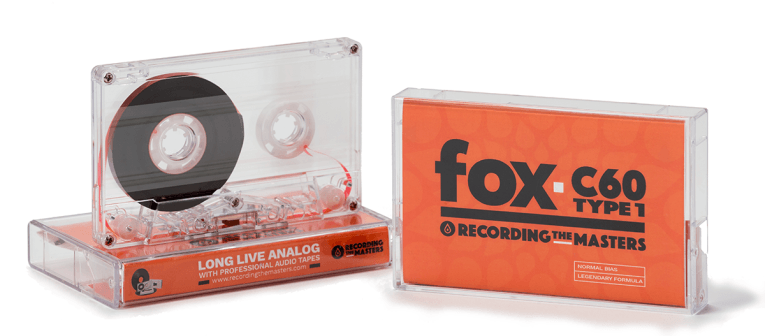
AX: Going back to RecordingTheMasters' reel-to-reel business. You already have different formulas on the market. How are those doing?
JLR: We have made five different formulas, targeting different customers. First, we have a semi-pro version the long-play LPR 90 and the LPR 35. These formulas are for users who have Sony pro tape type decks. It works fine and can be played back on almost every machine. Then we have our professional formulas, the SM900 for studio use, the SM 911, and the SM 468 more for archiving with higher thickness. Companies that are selling copies of master reel tapes in the US are using the SM 900, in Asia it's more the SM 911. But the SM 900 is the most popular formula for duplication because audiophiles who buy these reel-to-reel copies usually like classical and jazz music, more than anything else.
The take-up on the reel-to-reel market is not a surprise. Look at what happen with the vinyl. Six to seven years ago people would not believe that we would reach these results. I think we are part of a bigger phenomenon. Young people want to have another choice, because digital cannot do everything. We want to offer choices to the people.
www.mulann.com| www.recordingthemasters.com





